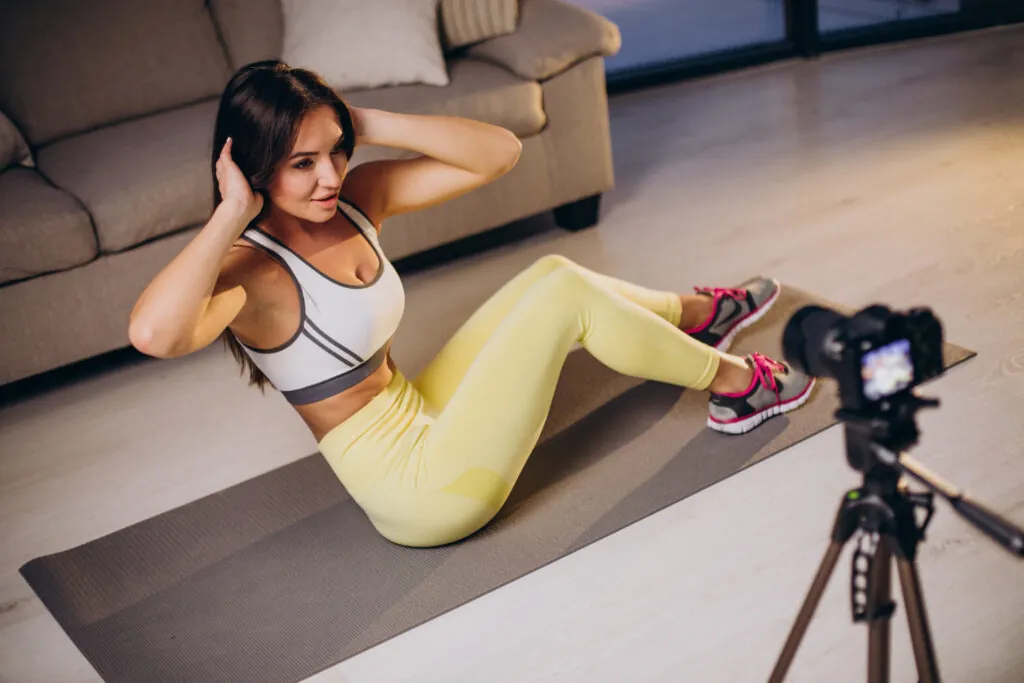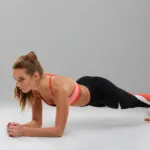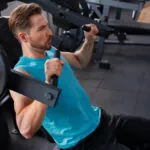You’ve seen them. The “10-minute ab workouts for beginners” videos with the same recycled format: 45 seconds on, 15 seconds off, a few crunches, some leg raises, and maybe a plank thrown in for good measure. Every video swears it’s the secret to a six-pack. Just stick with it and the abs will appear.
Here’s the truth: it can work… if you’re laser-focused on form, consistent to the bone, and you’re also cutting body fat through diet. Otherwise? You’re just sweating in place.
The real problem is that these workouts are one-size-fits-all. What works for the shredded instructor on YouTube might not work for you, especially if you’re just getting started, dealing with back pain, or trying to figure out what proper form even looks like.
So instead of going through cookie-cutter ab workouts for beginners, we’re going to break down what an effective beginner ab workout should look like, what actually works, what to watch out for, and how to train smart from day one.
What’s Wrong with Those 10-Minute Ab Workouts for Beginners?
Those 10-minute ab workouts for beginners on YouTube aren’t useless, but they’re far from ideal if you’re just starting out. Here’s why.
Exercise Selection
Most of these routines throw in whatever looks simple, bicycle crunches, flutter kicks, mountain climbers, without thinking about your body, your level, or whether you can even engage your core properly. Just because an exercise looks “beginner-friendly” doesn’t mean it’s the right fit for you.
And there’s no shame in that. The issue isn’t being unable to do the move, it’s doing it wrong and getting nothing out of it. If your form is sloppy or you’re using momentum instead of muscle, you’re basically just going through the motions. Zero core engagement, zero progress.
You’ll get way more out of 10 solid reps of a simpler move done with full control than 20 half-baked reps of something too advanced. That’s how you actually build strength.
The Pace
High-intensity formats like 45 seconds on, 15 seconds off can be great. But for beginners? That pace pushes you past your limit fast. And when that happens, form goes out the window.
Suddenly, you’re just trying to survive the timer instead of focusing on the muscles that are supposed to be working. That’s when injuries happen or at best, you waste your time.
You don’t need to rush. You need to learn. If you’ve only got 10 minutes, use them to master two or three basic movements. Go slow. Focus on quality. Feel your core doing the work. That’s how real results start. Not from mimicking a video, but from actually owning the movement.
What Are Good Ab Workouts for Beginners?
Good ab workouts for beginners are the ones that you build around exercises that you can do with correct form.
And here’s the part most people skip… Your abs aren’t just one muscle. Your core is a group of muscles working together:
- Upper abs (what you see first when body fat drops)
- Lower abs (tougher to hit, but key for stability)
- Obliques (your side abs, responsible for rotation and side bending)
- Deep core (mainly the transverse abdominis, your built-in weight belt that keeps everything tight and stable)
Together, these muscles aren’t just for show. A strong core helps with almost everything. Lifting, squatting, running, twisting, and even just standing upright. It keeps your spine safe, your posture solid, and your movement efficient.
So if you’re training abs just to “get lean,” you’re missing the bigger picture. A strong core makes you move better, look better, and perform better in everything you do.
Ab Workouts for Beginners: The Ultimate Guide
Let’s break this down the right way. A good ab workout targets all four core muscle groups, plus one area most people ignore: the lower back.
Upper Abs
These are the muscles behind that top-row six-pack look. You’ll feel the burn quickly here, but form matters more than speed.
- Crunches: Classic, simple, and effective when done slowly and controlled.
- Toe Touches: Lie on your back, legs straight up, reach for your toes. Burns fast.
- Knee-Over Crunch: Knees bent 90 degrees, crunch forward, keep lower back down.
Lower Abs
Harder to activate but essential for real core control. These moves help stabilize your pelvis and spine.
- Leg Raises: Straight legs, slow on the way down. Back flat.
- Bent-Knee Leg Raises: Easier version, same motion but knees bent.
- Reverse Crunches: Pull your knees toward your chest, lift hips slightly.
Side Abs (Obliques)
These control rotation, help with balance, and shape your waist.
- Seated Russian Twists: Keep your core tight. Add weight when ready.
- Side-Lying Reach Crunch: Lie on your side, crunch upward toward your knees.
- Side Plank (Knees Down): Build side-core strength with zero movement.
Deep Core (Transverse Abdominis)
This is your internal brace. It stabilizes everything from the inside out. Crucial for posture and injury prevention.
- Dead Bug: Opposite arm and leg move while back stays flat.
- Pelvic Tilts: Subtle but powerful. Helps activate deep muscles.
- Bird Dog: Great for control and balance. Move slowly, stay steady.
Lower Back
Here’s what most people skip, and it’s a big mistake. Your core wraps all the way around, and the lower back is the anchor. Weak back = weak core.
- Glute Bridge: Strengthens the glutes and lower back together.
- Cat-Cow Stretch: Improves spine mobility and coordination.
- Prone Leg Raises (One at a Time): Gentle but effective for isolating the back.
How to Structure Ab Workouts for Beginners
Start with an assessment day. Try every exercise from the list above. One set each. That’s it.
If you can do at least 10 reps with good form, it’s a keeper. If not? No stress. Swap it for something more doable and come back to it later. With a few weeks of consistent training, you’ll get there. But don’t force it. Bad reps do nothing but waste your time or mess up your back.
Once you’ve got your shortlist of exercises, here’s how to build your workout:
Pick 1 exercise for each group:
- Upper abs
- Lower abs
- Obliques (side abs)
- Deep core
Do 3 sets of max reps with good form. Rest as needed between sets.
That’s your core workout. You can switch up the order each day to keep it interesting and avoid burning out one area too soon. Simple, effective, and actually tailored to you.
Isometric Hold vs. Dynamic Movement
Dynamic movements are your crunches, leg raises, twists, anything where your muscles are actively shortening and lengthening. These build strength through range of motion. They hit the abs hard, help with control, and give you that “burn” everyone talks about.
Isometric holds, on the other hand, are all about staying still. Exercises like planks, side planks, and hollow holds. You’re not moving, but your muscles are fully engaged the entire time. These build core stability, endurance, and deep control. Especially in your deep core and obliques.
So, which is better?
Both. Dynamic movements train your abs to contract and move your trunk. Isometric holds train your abs to resist movement, like bracing when lifting or keeping your posture solid.
Expand your knowledge of ab exercises for beginners with these 3 lower-ab exercises with resistance bands.
Final Thoughts
If you’re serious about building real core strength, you need more than recycled YouTube routines. The “10-minute abs” videos might get you sweating, but they won’t take you far unless the exercises actually fit your level and you’re training with purpose.
Start smart. Pick movements that match your ability. Focus on perfect form. Hit all parts of your core, not just the ones you can see. Mix dynamic work with isometric holds. And don’t forget your lower back, it’s the hidden backbone of a strong core.





